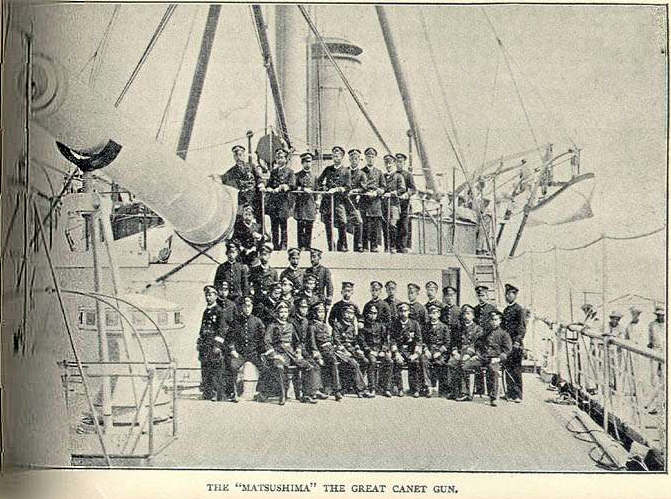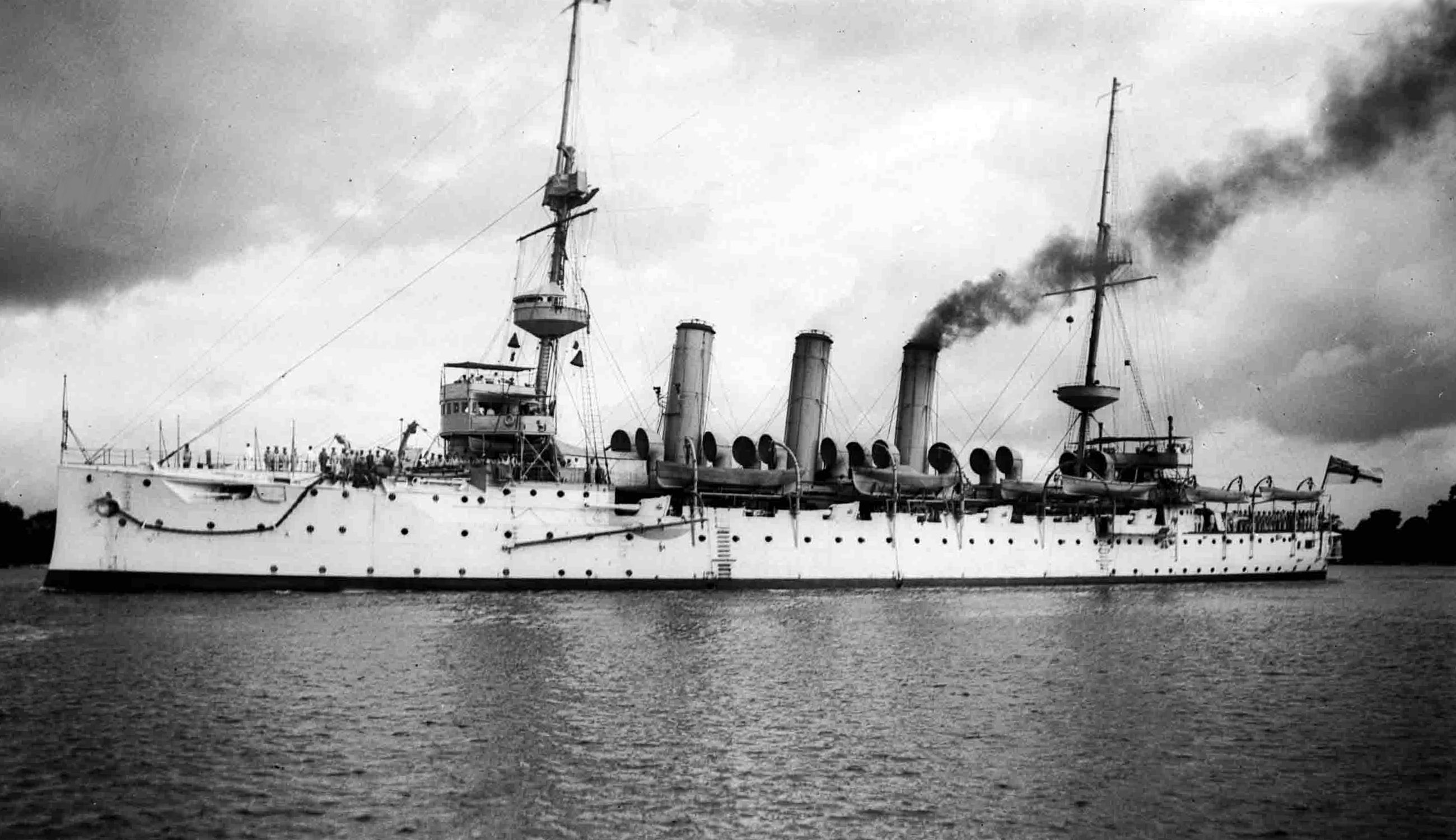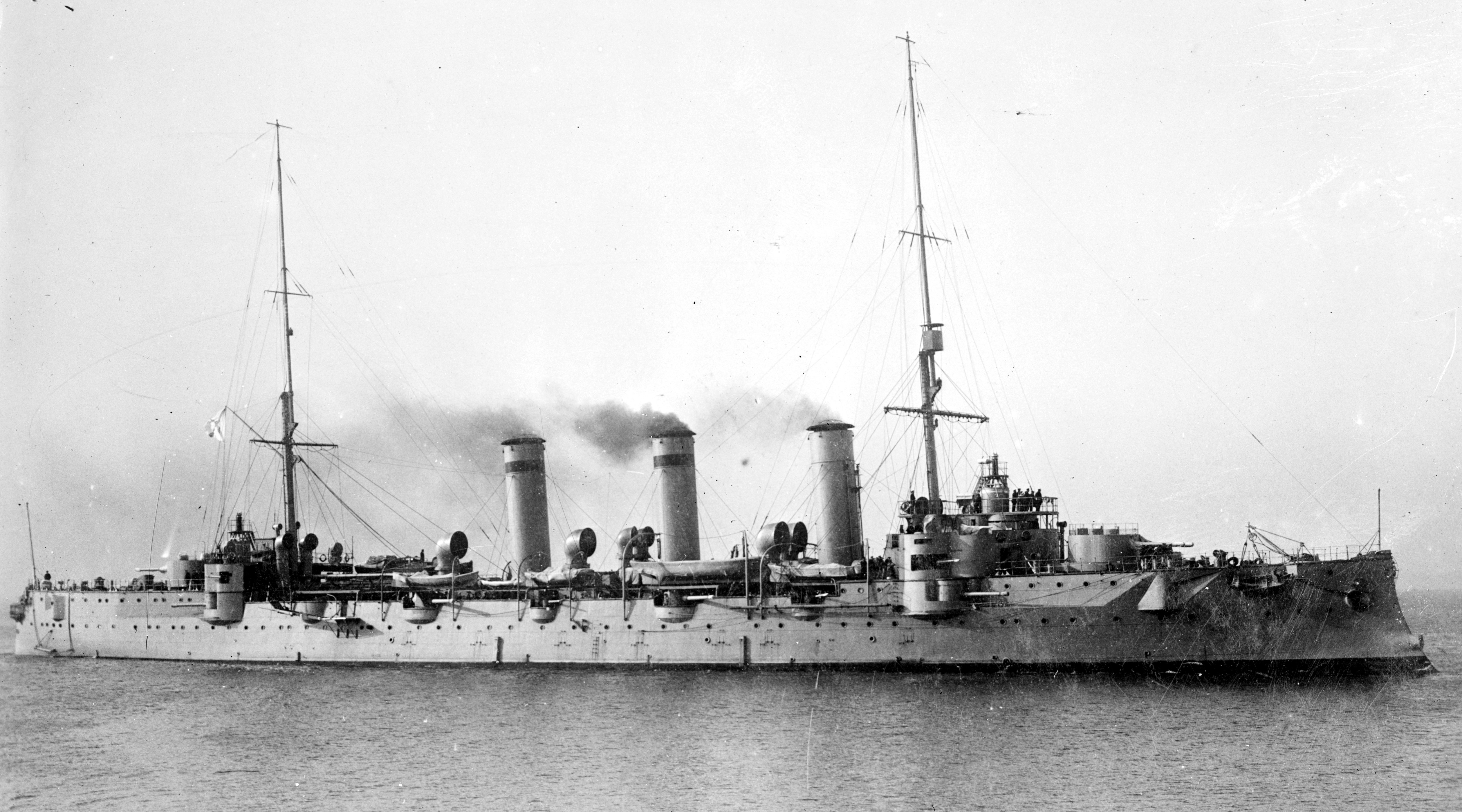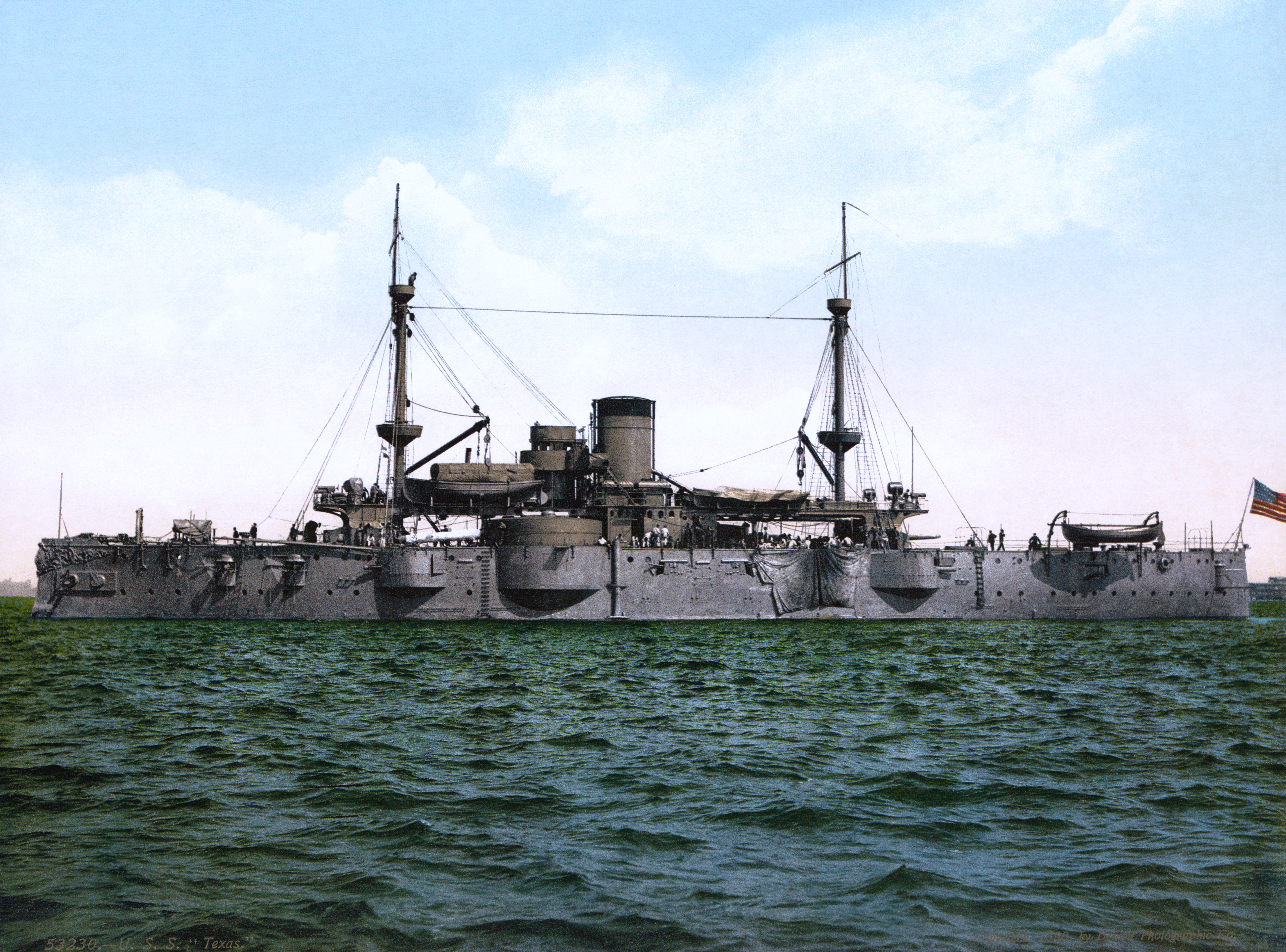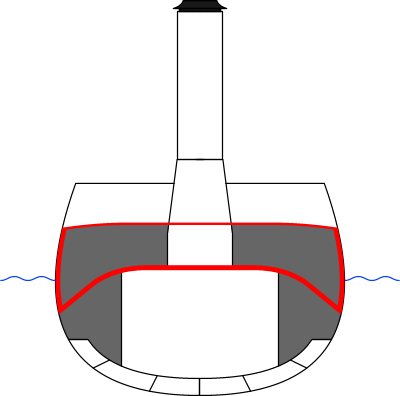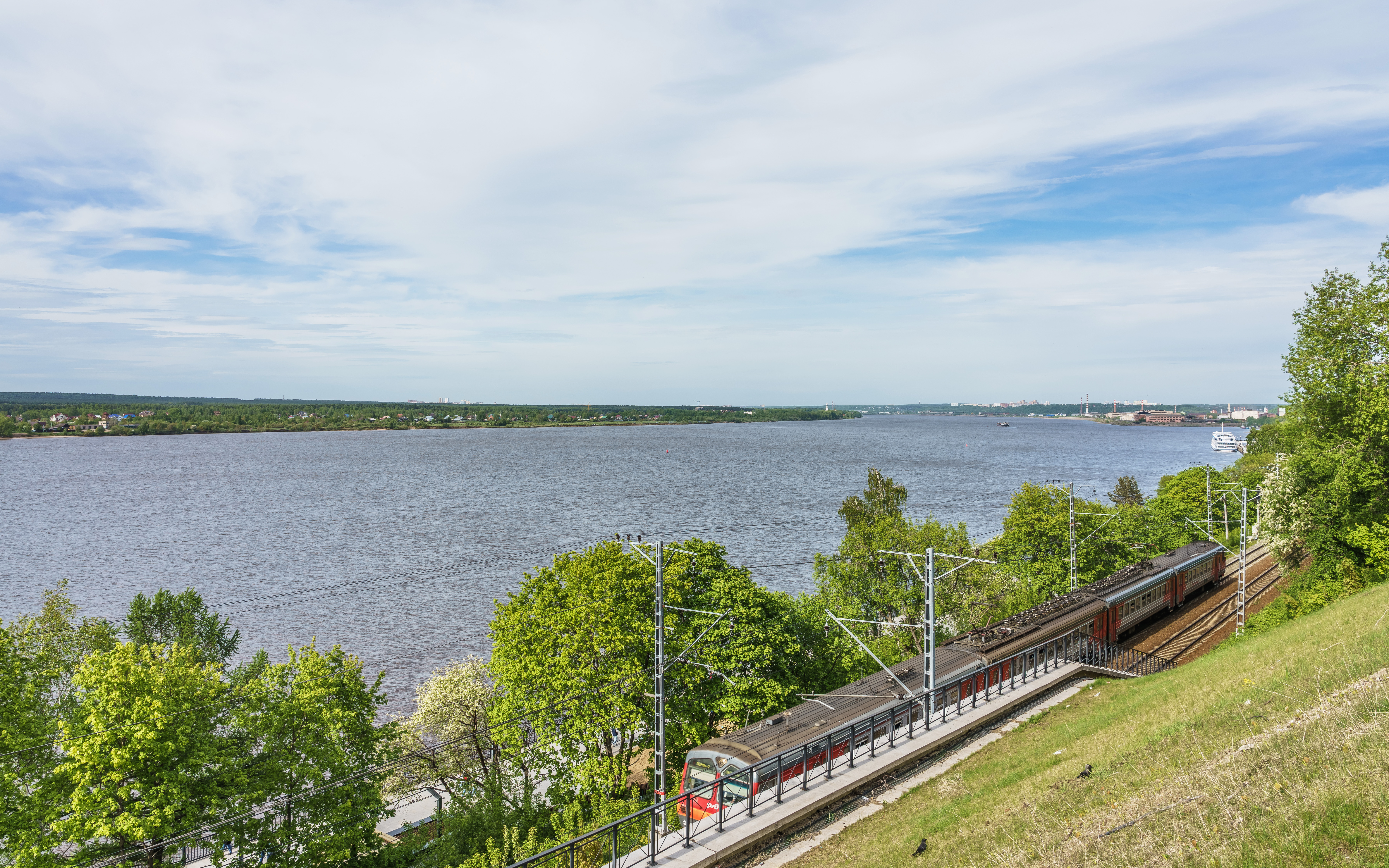|
120mm 45 Caliber Pattern 1892
The 120mm 45 caliber Pattern 1892 was a Russian naval gun developed in the years before the Russo-Japanese War that armed a variety of warships of the Imperial Russian Navy during the Russo-Japanese War and World War I. Guns salvaged from scrapped ships found a second life on river gunboats of the Soviet Navy during the Russian Civil War and as coastal artillery and railway artillery during World War II. It was estimated that in 1941 there were 35 still in service. History In 1891 a Russian naval delegation was shown three guns designed by the French designer Canet. One was a 75/50 gun, one was a 120/45 gun, and the last was a 152/45 gun. All three guns used fixed QF ammunition which produced a rate of fire of 15 rpm for the 75/50 gun, 12 rpm for the 120/45 gun and 10 rpm for the 152/45 gun. The Russians were impressed and in 1892 they negotiated a production license for all three guns. Construction There were two main series of the 120/45 guns produced. The first serie ... [...More Info...] [...Related Items...] OR: [Wikipedia] [Google] [Baidu] |
Kuivasaari
Kuivasaari (''Torra Mjölö'' in Swedish) is a Finnish island in the Gulf of Finland, near Helsinki. Kuivasaari is located some out into the Gulf of Finland, due south of Helsinki city centre, and was for many years the outermost inhabited island in the Helsinki archipelago (now there is no permanent settlement based on the island). It lies parallel to the Harmaja lighthouse, and the main shipping route into and out of Helsinki passes between the two. In fair weather the city of Tallinn, Estonia on the southern shore of the Gulf of Finland is visible from the observation tower. The whole island is a military installation of the Finnish Defence Forces, and access for civilians is heavily restricted. A number of coastal artillery guns are installed there, including some exceptionally heavy pieces. The island served as an important coastal artillery fort protecting the entrance to Helsinki harbour during the World Wars. The island gets its name, meaning 'dry island', from the fa ... [...More Info...] [...Related Items...] OR: [Wikipedia] [Google] [Baidu] |
Canet Gun
The Canet guns were a series of weapon systems developed by the French engineer Gustave Canet (1846–1908), who worked as an engineer from 1872 to 1881 for the London Ordnance Works, then for Forges et Chantiers de la Méditerranée, and from 1897 to 1907 for Schneider et Cie of Le Creusot. 320 mm naval guns Canet developed a 38 cal naval gun, an extremely powerful weapon for its time, specifically for the export market. The gun was first selected by the Spanish Navy in 1884 as part of a large naval expansion program which called for six new battleships. The Spanish armaments firm Hontoria obtained a manufacturing license to produce the weapon, but due to budgetary reasons, only one vessel, the , was completed. Canet was more successful in sales to the Empire of Japan, when the gun was selected by the French military advisor and naval architect Louis-Émile Bertin as the main battery of the , new type of cruiser he had designed in 1887. The usage was consistent with ... [...More Info...] [...Related Items...] OR: [Wikipedia] [Google] [Baidu] |
Seaplane Tender
A seaplane tender is a boat or ship that supports the operation of seaplanes. Some of these vessels, known as seaplane carriers, could not only carry seaplanes but also provided all the facilities needed for their operation; these ships are regarded by some as the first aircraft carriers and appeared just before the First World War. Terminology In maritime parlance a tender is a vessel that is used to support the operation of other vessels. In British usage, the term tender was used for small craft, with the term depot ship being used for large seagoing vessels. Flying boats and float planes even when based at home in ports and harbour had a need for small support vessels to operate.p British tenders were small craft of launch to pinnace size. These were used to ferry crews, stores and supplies between shore and the aircraft, to maintain the buoys used to mark out "taxiways" and "runways" and to keep these clear of debris to prevent foreign object damage, and in the case of ... [...More Info...] [...Related Items...] OR: [Wikipedia] [Google] [Baidu] |
Protected Cruisers
Protected cruisers, a type of naval cruiser of the late-19th century, gained their description because an armoured deck offered protection for vital machine-spaces from fragments caused by shells exploding above them. Protected cruisers resembled armored cruisers, which had in addition a belt of armour along the sides. Evolution From the late 1850s, navies began to replace their fleets of wooden ships-of-the-line with armoured ironclad warships. However, the frigates and sloops which performed the missions of scouting, commerce raiding and trade protection remained unarmoured. For several decades, it proved difficult to design a ship which had a meaningful amount of protective armour but at the same time maintained the speed and range required of a "cruising warship". The first attempts to do so, armored cruisers like , proved unsatisfactory, generally lacking enough speed for their cruiser role. During the 1870s the increasing power of armour-piercing shells made arm ... [...More Info...] [...Related Items...] OR: [Wikipedia] [Google] [Baidu] |
Battleships
A battleship is a large armored warship with a main battery consisting of large caliber guns. It dominated naval warfare in the late 19th and early 20th centuries. The term ''battleship'' came into use in the late 1880s to describe a type of ironclad warship,Stoll, J. ''Steaming in the Dark?'', Journal of Conflict Resolution Vol. 36 No. 2, June 1992. now referred to by historians as pre-dreadnought battleships. In 1906, the commissioning of into the United Kingdom's Royal Navy heralded a revolution in the field of battleship design. Subsequent battleship designs, influenced by HMS ''Dreadnought'', were referred to as "dreadnoughts", though the term eventually became obsolete as dreadnoughts became the only type of battleship in common use. Battleships were a symbol of naval dominance and national might, and for decades the battleship was a major factor in both diplomacy and military strategy.Sondhaus, L. ''Naval Warfare 1815–1914'', . A global arms race in battleship constr ... [...More Info...] [...Related Items...] OR: [Wikipedia] [Google] [Baidu] |
Predreadnought
Pre-dreadnought battleships were sea-going battleships built between the mid- to late- 1880s and 1905, before the launch of in 1906. The pre-dreadnought ships replaced the ironclad battleships of the 1870s and 1880s. Built from steel, protected by case-hardened steel armour, and powered by coal-fired triple-expansion steam engines, pre-dreadnought battleships carried a main battery of very heavy guns in fully enclosed rotating turrets supported by one or more secondary batteries of lighter weapons. In contrast to the multifarious development of ironclad warships in preceding decades, the 1890s saw navies worldwide start to build battleships to a common design as dozens of ships essentially followed the design of the Royal Navy's . The similarity in appearance of battleships in the 1890s was underlined by the increasing number of ships being built. New naval powers such as Germany, Japan, the United States, and to a lesser extent Italy and Austria-Hungary, began to establish ... [...More Info...] [...Related Items...] OR: [Wikipedia] [Google] [Baidu] |
Minesweepers
A minesweeper is a small warship designed to remove or detonate naval mines. Using various mechanisms intended to counter the threat posed by naval mines, minesweepers keep waterways clear for safe shipping. History The earliest known usage of the naval mine dates to the Ming dynasty.Needham, Volume 5, Part 7, 203–205. Dedicated minesweepers, however, only appeared many centuries later during the Crimean War, where they were deployed by the British. The Crimean War minesweepers were rowboats trailing grapnels to snag mines. Minesweeping technology picked up in the Russo-Japanese War, using aging torpedo boats as minesweepers. In Britain, naval leaders recognized before the outbreak of World War I that the development of sea mines was a threat to the nation's shipping and began efforts to counter the threat. Sir Arthur Wilson noted the real threat of the time was blockade aided by mines and not invasion. The function of the fishing fleet's trawlers with their trawl gear was ... [...More Info...] [...Related Items...] OR: [Wikipedia] [Google] [Baidu] |
Destroyers
In navy, naval terminology, a destroyer is a fast, manoeuvrable, long-endurance warship intended to escort larger vessels in a Naval fleet, fleet, convoy or Carrier battle group, battle group and defend them against powerful short range attackers. They were originally developed in 1885 by Fernando Villaamil for the Spanish NavySmith, Charles Edgar: ''A short history of naval and marine engineering.'' Babcock & Wilcox, ltd. at the University Press, 1937, page 263 as a defense against torpedo boats, and by the time of the Russo-Japanese War in 1904, these "torpedo boat destroyers" (TBDs) were "large, swift, and powerfully armed torpedo boats designed to destroy other torpedo boats". Although the term "destroyer" had been used interchangeably with "TBD" and "torpedo boat destroyer" by navies since 1892, the term "torpedo boat destroyer" had been generally shortened to simply "destroyer" by nearly all navies by the First World War. Before World War II, destroyers were light vessels ... [...More Info...] [...Related Items...] OR: [Wikipedia] [Google] [Baidu] |
Coastal Defence Ship
Coastal defence ships (sometimes called coastal battleships or coast defence ships) were warships built for the purpose of coastal defence, mostly during the period from 1860 to 1920. They were small, often cruiser-sized warships that sacrificed speed and range for armour and armament. They were usually attractive to nations that either could not afford full-sized battleships or could be satisfied by specially designed shallow-draft vessels capable of littoral operations close to their own shores. The Nordic countries and Thailand found them particularly appropriate for their island-dotted coastal waters. Some vessels had limited blue-water capabilities; others operated in rivers. The coastal defence ships differed from earlier monitors by having a higher freeboard and usually possessing both higher speed and a secondary armament; some examples also mounted casemated guns (monitors' guns were almost always in turrets). They varied in size from around 1,500 tons to 8,000 ... [...More Info...] [...Related Items...] OR: [Wikipedia] [Google] [Baidu] |
Auxiliary Cruisers
An armed merchantman is a merchant ship equipped with guns, usually for defensive purposes, either by design or after the fact. In the days of sail, piracy and privateers, many merchantmen would be routinely armed, especially those engaging in long distance and high value trade. In more modern times, auxiliary cruisers were used offensively as merchant raiders to disrupt trade chiefly during both World War I and World War II, particularly by Germany. While armed merchantmen are clearly inferior to purpose-built warships, sometimes they have scored successes in combat against them. Examples include East Indiamen mimicking ships of the line and chasing off regular French warships in the Battle of Pulo Aura in 1804, and the sinking the Australian light cruiser in their battle in 1941, although ''Kormoran'' was also destroyed and had to be scuttled. Pre-20th century East Indiamen of various European countries were heavily armed for their long journeys to the Far East. In parti ... [...More Info...] [...Related Items...] OR: [Wikipedia] [Google] [Baidu] |
Armored Cruisers
The armored cruiser was a type of warship of the late 19th and early 20th centuries. It was designed like other types of cruisers to operate as a long-range, independent warship, capable of defeating any ship apart from a battleship and fast enough to outrun any battleship it encountered. For many decades, naval technology had not advanced far enough for designers to produce a cruiser which combined an armored belt with the long range and high speed required to fulfill its mission. For this reason, beginning in the 1880s and 1890s, many navies preferred to build protected cruisers, which only relied on a light armored deck to protect the vital parts of the ship. However, by the late 1880s, the development of modern rapid-fire breech-loading cannon and high-explosive shells made the reintroduction of side armor a necessity. The invention of face-hardened armor in the mid-1890s offered effective protection with less weight than previously. Varying in size, the armored cruiser was ... [...More Info...] [...Related Items...] OR: [Wikipedia] [Google] [Baidu] |
Perm, Russia
Perm (russian: Пермь, p=pʲermʲ), previously known as Yagoshikha (Ягошиха) (1723–1781), and Molotov (Молотов) (1940–1957), is the largest city and the administrative centre of Perm Krai, Russia. The city is located on the banks of the Kama River, near the Ural Mountains, covering an area of , with a population of over one million residents. Perm is the List of cities and towns in Russia by population, fifteenth-largest city in Russia, and the fifth-largest city in the Volga Federal District. In 1723, a copper-smelting works was founded at the village of ''Yagoshikha''. In 1781 the settlement of Yagoshikha became the town of ''Perm''. Perm's position on the navigable Kama River, leading to the Volga, and on the Siberian Route across the Ural Mountains, helped it become an important trade and manufacturing centre. It also lay along the Trans-Siberian Railway. Perm grew considerably as industrialization proceeded in the Urals during the Soviet period, and i ... [...More Info...] [...Related Items...] OR: [Wikipedia] [Google] [Baidu] |
